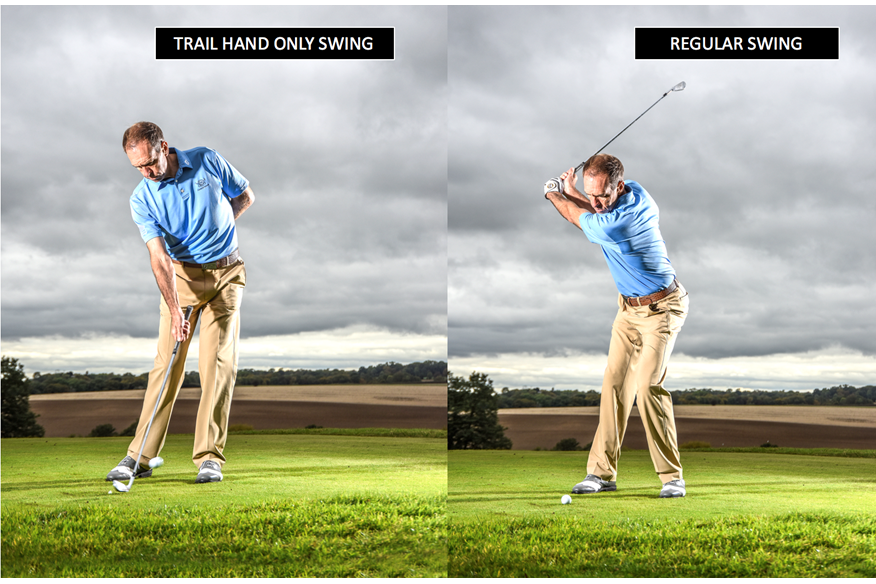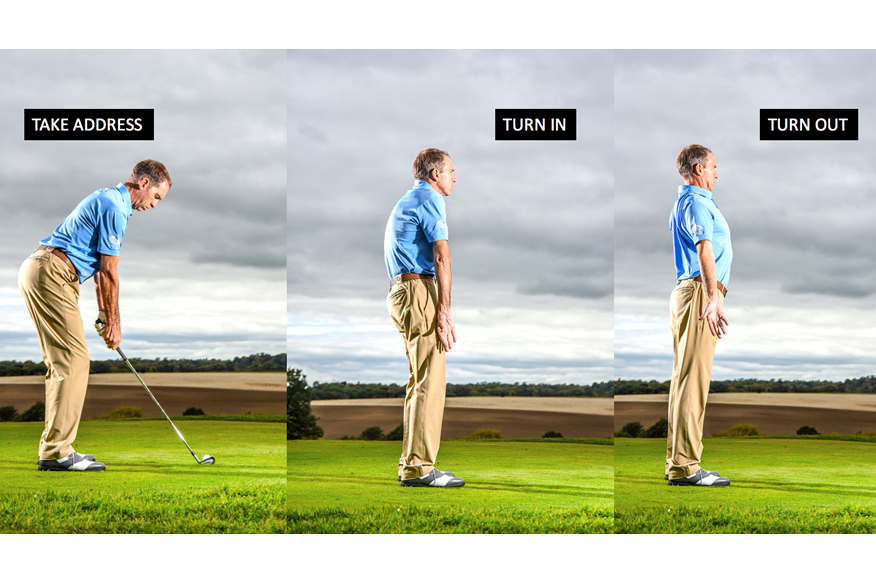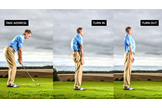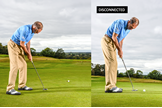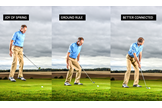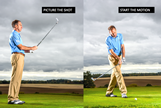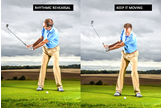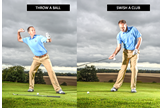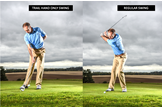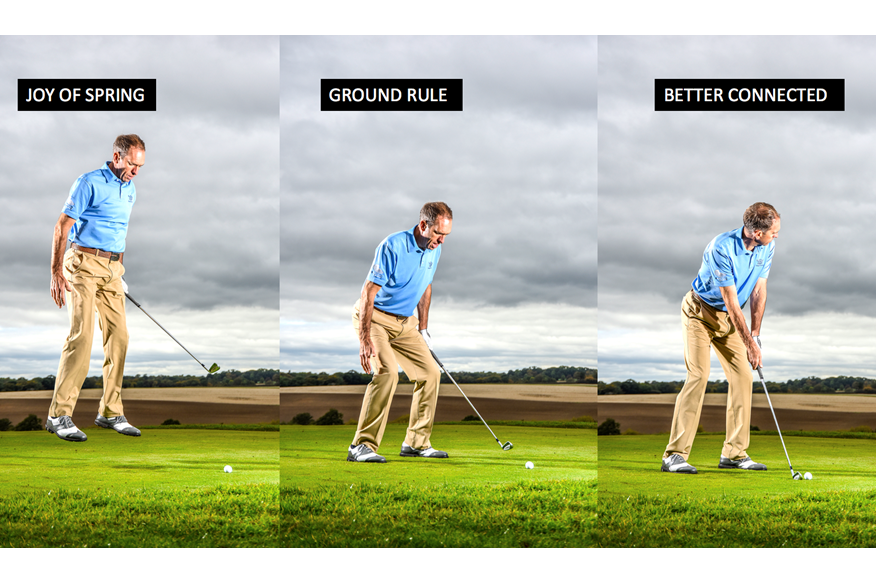Reboot your game with these nine drills
Last updated:
Take this opportunity to press the reboot button before heading into spring with nine simple tricks to improve every part of your game
At some point through the winter, there’ll be a time when you put the sticks away for a week or two. Usually it’s enforced, due to weather and course conditions – but there’s a good argument to be made for taking a break whether you have to or not. A break helps you draw the line under the previous year’s golf and make a fresh start for 2019. That means you can start the new year with a clean slate and a fresh outlook. A winter break is an opportunity.
Throughout a season of golf, we all inevitably get into some bad habits. A new start gives you the chance to create some new, more effective movement patterns… and that’s what this is all about. We will run through nine problem areas that commonly develop over the season, and look at quick ways to train new movement.
You’ll find we don’t delve too deep into technique, and that’s deliberate; with all the free instruction available to you online today, information overload is a real problem, and I’m increasingly seeing actions with poor flow and rhythm as golfers try to adopt a torrent of advice. Simple processes make for a clear mind and a flowing swing. Let that thought underpin your golf in 2019.
FRESH START #1: Open Up For A Better Posture and Address
Over the season we can all start to get a little crouched and narrow. Such an address leads to limited movement and poor mechanics. Follow this simple process to feel more extended and athletic.
Take your address: With this feeling of openness locked in, take a mid-iron and set up to the ball. Do not focus too much on lines and angles – aim more for an awareness of lightness and extension, your head held up off the chest, and the feeling you are free to move away from the ball.
Turn in: Stand upright, without a golf club. Now rotate your arms inward as far as you can, ideally until your palms start facing outward. You can see how this rolls your shoulders forward, and rounds your back. Hold the position for a second.
Turn out: Now go the other way, again as far as possible. Turn your hands and forearms out, again until the palms face away from your side. Feel how this opens out your chest and shoulders, pulling your shoulder blades down and in towards your spine.
Check Point: Standing a little taller and holding that position through the season takes some effort. If you make it a regular habit to practise the turn in and turn out exercise described here, it will help you maintain a good posture throughout the season
FRESH START #2: Ditch the practice stroke to help your putting stroke flow
Putting is a part of the game that would ideally be performed instinctively, the stroke you make being a reaction to the task in front of you. It can be argued that making a practice stroke gets in the way of this. After all, if you were going to throw a ball to a friend across the garden you wouldn’t feel the need to rehearse the move… So for 2019, in keeping with a theme of being less technical, ditch the practice stroke and trust your instincts. Your stroke will become freer and more sure as a result.
Disconnected: Practice strokes can lead to technical thoughts and a disconnect from that task. That promotes a jerky, uncertain stroke.
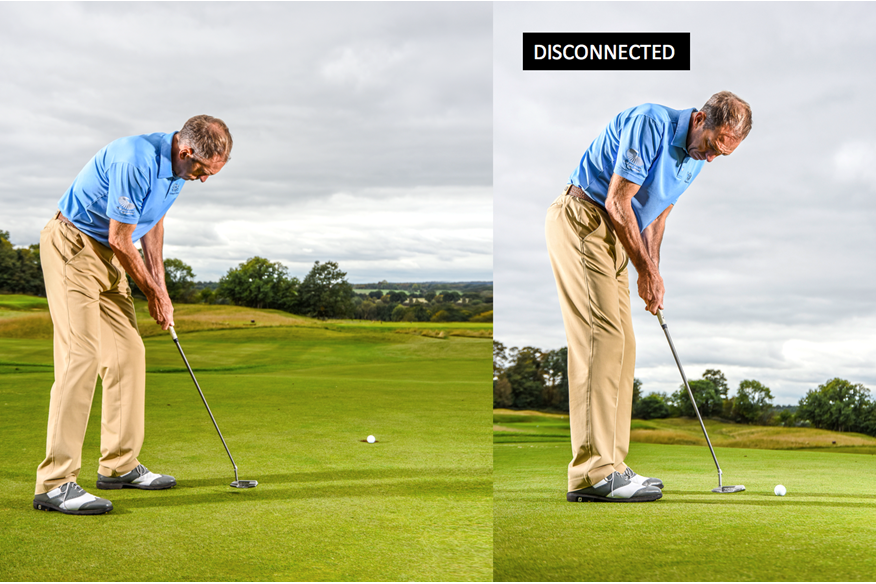
FRESH START #3: Create a more solid platform
Great players report a feeling of their feet being “alive” and connected to the ground; amateurs in contrast can look as though they are swinging on ice! Here’s a way to make sure 2019 is the year you improve your relationship with the turf.
Joy of spring: Take your 6-iron. Hold it in your gloved hand. Now perform your biggest standing jump possible – squat down into the ground to push off from it. Aim to spring vertically upwards.
Ground rule: Land evenly on both feet, allowing both knees to flex. You will naturally find your balance point as you land, and the extra pressure running down through your feet will give you a welcome feeling of being grounded.
Better connected: Take these feelings into your address. Allow yourself to feel strong and stable and your feet alert. But also check you feel connected to the ground, and balanced on it; feel maximum pressure down under your laces, 50-50 left to right, heel to toe.
FRESH START #4: Get on the ‘conveyor belt’
The fact we swing a golf club from a static position can cause problems with the first move away, and getting the swing moving. But you can go into 2019 armed with a new, flowing pre-shot routine that eliminates any feel of stopping and starting. Once you are ready to walk into the shot, try and maintain a consistent flow, just like a conveyor belt – not speeding up or slowing down.
Picture The Shot: Start by standing behind the ball. Place your awareness on your target, and the swing you’ll need to make to send the ball there. This is the last time you will feel “static”.
Start The Motion: Start the conveyor belt by stepping forward into the shot. Aim to make this move in a controlled, fluent motion. Place your trail foot into position in time with the overall motion; keep clubhead moving.
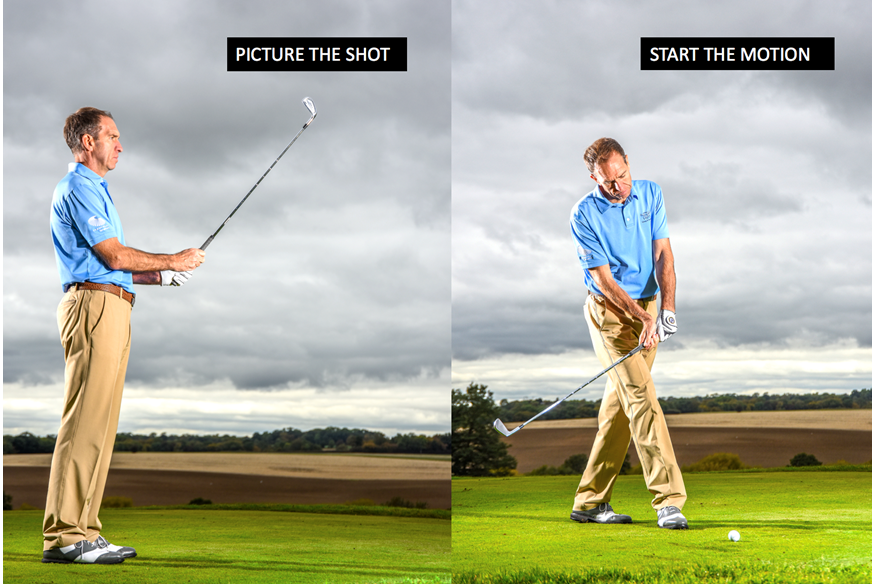
Rhythmic Rehearsal: To help maintain the idea of the conveyor belt, it can be useful to rehearse one takeaway move in the same flow. So keep things moving by making a rehearsal of whatever you are working on technically. Then continue this pace/flow into the swing.
Keep It Moving: Those first three steps have created a rhythm and momentum you can take with you into the start of the swing itself. As soon as the club returns to the ball and your mind to the target, keep that conveyor-belt feeling of flow by moving straight into the swing.
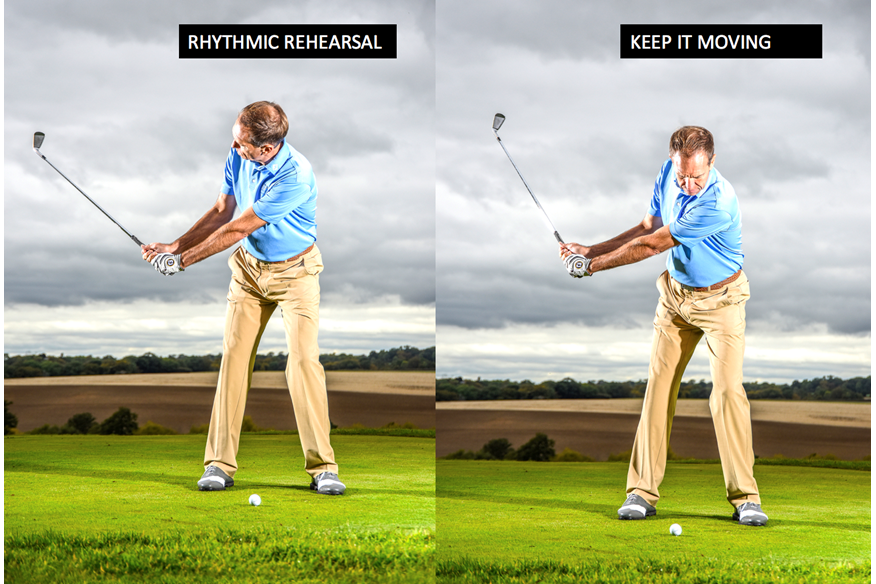
FRESH START #5: Split your hands to improve your ball-striking
One of the most common swing issues we see with club players is the body stalling and the hands and arms thrown at the ball. It delivers a weak strike, often with a rising clubhead, that leads to thins and duffs. Nip this in the bud in 2019 by waking up your core rotation; this in itself will calm a handsy strike. Here’s a drill to help.
Better body rotation: Now, simply hit balls with this new grip. With the trail hand closer to the clubhead and the influence of the lead hand diminished, you will feel how the hands and wrists are taken out of the delivery of the club. As their contribution reduces, your upper body automatically becomes more dominant.
Split hands: Take your 7-iron. Grip the handle with split hands, the trail hand half on the metal and half on the rubber.
As you work on this drill, you will begin to feel your upper body rotating with more pace and purpose through the ball; your chest will begin to face the target shortly after impact. Maintain this feel with your normal grip and you’ll keep hand and wrist action under control… leading to a much more stable and powerful delivery of the club.
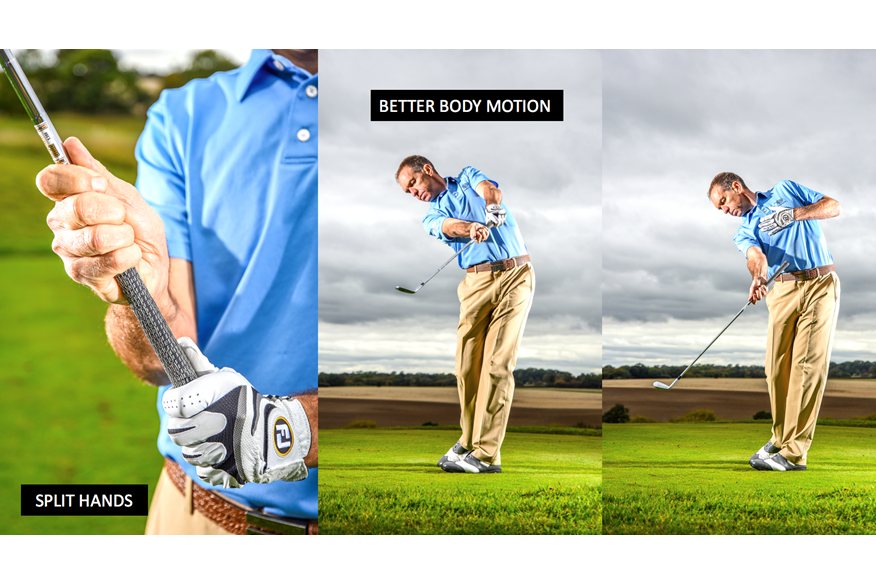
FRESH START #6: How a machine gun can boost your rhythm and timing
This drill, sometimes called the “Machine Gun”, is an excellent way to remind yourself what good swing rhythm and timing feels like, and how your swing needs to order itself to achieve it. Start by taking three to five balls and setting them up in a row, as shown. Take your 7-iron and set up to the first one.
Natural Rhythm: Don’t pause to admire or judge the shot. Instead, enjoy the feeling of your body beginning to fall in with the back-through motion of the swinging club. Feel too how this drill begins to set a natural rhythm to your action, neither snatchy or ponderous.
Go With The Flow: Move up the line and hit each ball without stopping. Swing to a complete finish then immediately swing back over the next ball to create your backswing, flowing into the next strike. Make sure your steps into each ball feel as much a part of the swing and rhythm as the swing itself.
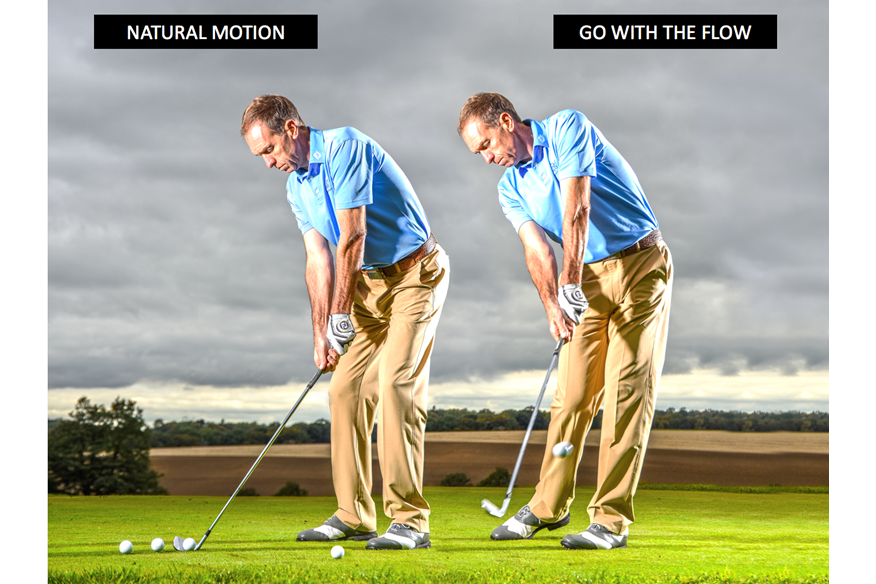
FRESH START #7: Hone better balance through a narrow stance
Balance is of course a fundamental of good golf. But over the course of a busy playing season we can lose sight of it, finding ways to get around the course from off-balance positions. It only ever means inconsistency. So start 2019 in balance simply by bringing feet-together hitting into your practice routine.
Take a 7-iron and hit three-quarter shots, focusing simply on remaining as poised as possible. A narrow stance exposes any imbalance, and encourages your brain to seek balanced movement patterns. When you can stay centred from here, widen your stance to permit a longer swing and more power. But as soon as you start falling off the shot, return to this drill.
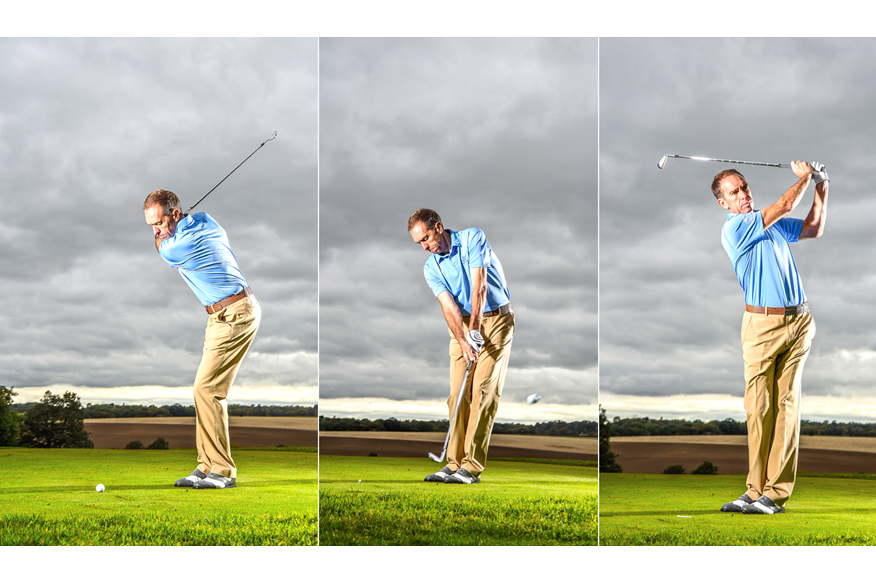
FRESH START #8: Go Single Handed For Solid Chipping
When club golfers have trouble with solid contact on chipping, it tends to be when the hands and body work out of time to each other. For 2019, make onehanded chipping your go-to drill. Practising with just one hand tends to automatically get your body to synchronise with the club and hand, which will give you a solid strike, leading to better results.
Lead hand only: The typical problem for the club player is the lead wrist breaking down as the trail hand throws the clubhead through. Practise chipping with your lead hand only and you strengthen that lead wrist, training a solid line through impact from your shoulder to the clubhead. Again, simply work on consistent, solid contact.
Trail hand only: Your trail hand provides much of the feel for the shot, and controls the wrist hinge that gives your movement rhythm and your action the correct arc. When you hit shots with your trail hand only, allow the weight of the clubhead to create a natural hinge in the wrist.
Solid release: For impact, simply focus on making solid contact. When you can achieve this consistently, you’ll have found a way to release that wrist hinge without flipping the clubhead. At impact, there should be just a slight kink in the back of your trail wrist, as at address.
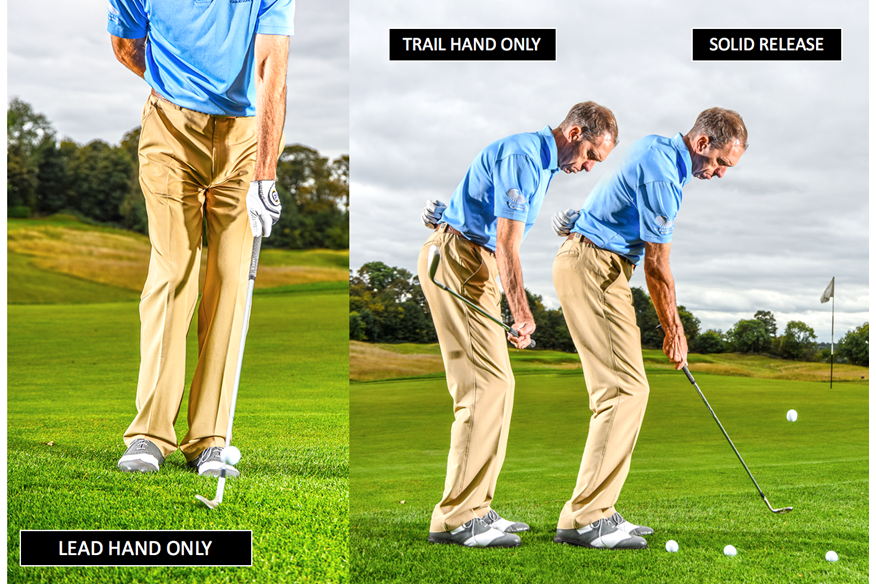
FRESH START #9: Four steps to train a move sequenced for power
The golf swing, like any power-hitting movement, works from the ground up; your lower body leads the downswing, and your upper body follows. This sequence puts the club on the correct path, and creates speed. Use your winter break to commit to employing this movement chain in 2019… and work on this four-stage drill to train it.
1. Throw a ball:
Start with an action you can already perform that uses the ground-up sequence – throwing. Throw five balls down the range as far as you can to wake up that feeling of an aggressive, leading lower body.
2. Swish a club
From here, take your 6-iron and flip it upside down. Grip with your trail hand only, just below the head. Make 10 swings, swishing the grip end as fiercely as possible. You’ll make your loudest swishes when you repeat the lower-body-first sequence of the throw.
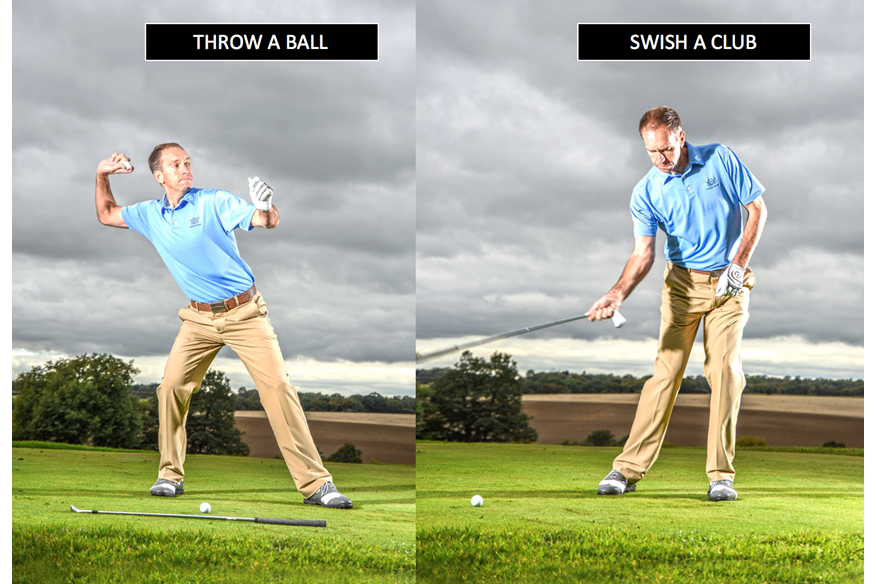
3. Trail-hand-only swing
Now turn the club the right way round and hit five shots with your trail hand only. Don’t worry too much where the ball goes; simply be aware that the only way you can fire any speed into the club is through the ground-up sequence.
4. Regular swing
Finally, put your lead hand on the club and hit balls as normal. Again, your focus isn’t so much the result of the shot but allowing the lower body to start the downswing. With time, you can make this move as instinctive as it is when you throw the ball.
